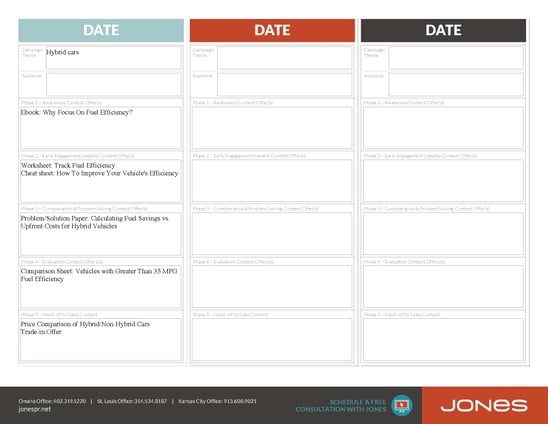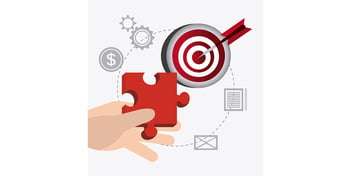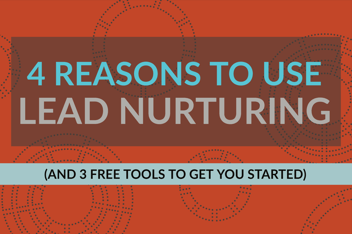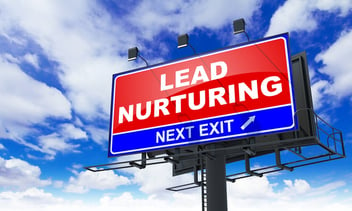4 of the Biggest Benefits of Lead Nurturing

Who likes encountering pushy salespeople? Let’s see a show of hands. No one? Exactly.
None of us like being put on the spot the minute we walk in the door at an auto dealership or small fashion boutique. Yes, we appreciate it when we are greeted warmly, offered assistance, and guided toward the things we are interested in, but the first impression shouldn’t be of the proverbial used-car salesman and his “So, what will it take to get you into this baby today?”
Visitors who come to your website feel the same way about being instantly sent to sales. Chances are, they came wanting to browse a little, get some information, and take a few notes. Maybe even test drive a couple of options, but not to buy the first thing they see.
In fact, only 25 percent of leads are legitimate and should go to sales. (Click to Tweet!) If you are sending everyone straight to a sales pitch, not only are you annoying your prospects, but you are probably wasting your sales department’s time.
Inbound marketing is perfectly suited to warming up leads before sending them on to sales by using automated lead nurturing.
What is lead nurturing?
In a nutshell, lead nurturing as a part of inbound marketing is a series of automated email offers sent to prospects who have converted to leads on your website by accessing an offer. Let’s say your business IS an auto dealership, and a website visitor downloads an ebook on fuel efficiency. In order to download the ebook, they provide an email address.
That action then triggers the automated system, not to have a sales person call them to sell them a hybrid, but to send a welcome email, and an offer for another piece of content. In this case, it might be a comparison chart of fuel-efficient vehicles or a template for tracking mileage and maintenance.
With each interaction, the lead is offered content that moves them through the sales funnel toward a purchase, until they are showing the signs of being a qualified lead who is ready to make a decision.
Only then is the lead turned over to the sales department, complete with the lead intelligence that will help the sales person be prepared to help the lead find the right fuel-efficient car.
Why use lead nurturing?
As we mentioned before, most leads aren’t ready to go straight to sales. Instead, they are seeking information to help them make a decision. With lead nurturing, you can be the one to provide the information they need. It’s good for them, and it’s good for you.
1. Automated lead nurturing is timely.
Rather than dropping leads into a system of random mass emails, which may not be sent right away, an automated lead nurturing system instantly responds with a follow-up email. Why is that so important? Because 25 to 50 percent of sales go to the vendor that responds first. (Click to Tweet!)
A quick response also increases the click-through rate on the subsequent email. Studies consistently show that CTRs decline with the age of the lead, so respond right away.
2. Did we mention it's automated?
That means once you set up a lead nurturing workflow, the system does the rest. Emails are set to be sent at specific intervals depending on the action taken by the lead, with offers that apply specifically to the initial interaction the lead had with your website.
The result is less work for you, and a potentially shorter sales cycle for your lead. In fact, Market2Lead found that nurtured leads have a 23 percent shorter sales cycle than those without lead nurturing. (Click to Tweet!)
3. Automated lead nurturing is targeted.
Going back to our auto dealership example, if a lead entered your system looking for information on fuel efficiency, chances are they aren’t interested in the biggest gas guzzler on the lot. So why would you want to include them in emails about those vehicles?
In using automated lead nurturing, you set up a lead nurturing workflow that provides a series of offers related to the topic that brought the lead to your site in the first place. Your plan for individual topics would look something like this:
Then you would use a template like this to plot out the landing page copy, calls-to-action and specific timing of each email in the nurturing workflow — all targeted specifically to your lead’s interests.
4. Nurturing emails have higher CTRs than generic emails.
In an analysis of more than 1,200 businesses in its customer database, JONES partner and inbound marketing software provider HubSpot, found that click-through rates for lead nurturing emails averaged 8 percent, compared to 3 percent for generic email blasts. (Click to Tweet!)
(Here’s how, to keep your nurturing emails out of the spam folder.)
What do you need for lead nurturing?
In order to implement lead nurturing, you need to find the right tools. Choosing the right software will ensure that your campaigns are run smoothly with the least amount of effort. The software should manage the content, the contacts, the emails and the events that trigger the emails.
When you evaluate marketing and lead nurturing software, consider these questions:
-
Is the tool easy to set up and manage?
-
Does the software help grow my contact list, or just reuse an existing list?
-
Does the software integrate easily with other marketing software, such as my website, blog, landing pages, social media and SEO tools?
Want more step-by-step details on the benefits of lead nurturing programs? Our Introduction to Lead Nurturing walks you through the process of setting up a campaign, along with providing a few best practices to keep in mind. Or schedule a demo to see how easy it is to set up a complete inbound marketing campaign, including lead nurturing, in HubSpot.
-1.png?width=1652&height=294&name=Jones(RGB)-1.png)













